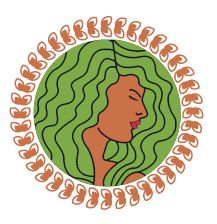Meditation
When we learn to quiet the body and mind, we find we have the power to go anywhere and do anything.

Usually when we talk about meditation people get a picture in their minds of someone sitting cross-legged, eyes closed with a look of calm and bliss on their face. Relatively new to Western culture, mediation has been used for many hundreds, even thousands of years in other cultures throughout the world. Meditation is a technique used to create mental clarity, emotional calm and physical relaxation. Meditation is also a technique used to create altered mental states, emotional and physical excitement. In short, Meditation is the ability to control your mind. This ability has to be learned, practiced and strengthened to be truly effective.
Meditation is sometimes associated with religious activities or groups. But, meditation is not religion or religious. It is a practice used by some religions, but it is not, in itself a religious activity. It is a mental activity used to create particular conditions in brain activity, thought processes and in our physical bodies. As such, it can be learned, practiced and improved upon by anyone.
There are many different kinds of meditation. In very general terms they fit into 3 broad categories; passive meditation, active meditation, and moving meditation. The common denominator in all types is that there is a measurable shift in brain activity so that the brain creates or exists in a different brainwave frequency.
Passive meditation is any type that involves releasing thoughts and intentions and simply “floating in the void.” Often using breath or specific music tones to achieve a mental state that sits between waking and sleeping, Passive Meditation allows one to “reset” mental processes, access deep levels of peace and tranquillity and join with a sense of oneness with all.
Active Meditation introduces active imagination or directed thought processes of the higher mind to create an internal shift, harness and train the power of the mind or receive direction/insight. Once the conscious mind (ego) has been quieted through Passive Meditation, the Active Meditation process is introduced through a guided journey, a repeated mantra or affirmation, contemplation of a question, principle or geometric symbol.
Moving Meditation introduces body movement to the above mental processes. Movement can be in the form of Qi Gong, Yin-Style Tai Chi, Yoga, Dance, or walking a familiar path in a forest. Long-distance runners are in a state of meditation when they reach the state known as “The Zone.” Musicians can achieve a meditative state when playing a familiar piece. The main point here is to achieve a state of exceptional calm in the mind while repeating movements that can be done without particular thought or concentration. The mind and body become one with the Universe.
One of the most common reasons for learning and practicing meditation is to reduce stress and control anxiety. Meditation has also been shown to reduce symptoms in people with stress-induced medical conditions.
Many people maintain meditation practices to enhance self-awareness and improve emotional health. Meditation can be used to develop a better understanding of ourselves, our motivations and our habitual thought processes. Long-term benefits can include decreases in depression, increased self-esteem, release from addiction and loneliness and creating a tendency towards positive thinking and optimism.
Some studies have even shown improved attention span and concentration abilities reduced age-related memory loss and increases positive actions towards yourself and others.
We also use The Max Meditation(TM) System as taught by the Modern Mystery School Int'l. This simple, yet powerful meditation system was designed and passed down by Founder Gudni Gudnason. Max Meditation(TM)is a careful fusion of Tibetan, Zen, and Yogic meditation elements, as well as mental acrobatics of Western Esoteric methods and modern techniques of psychology and Neuro-Linguistic Programming (NLP).





